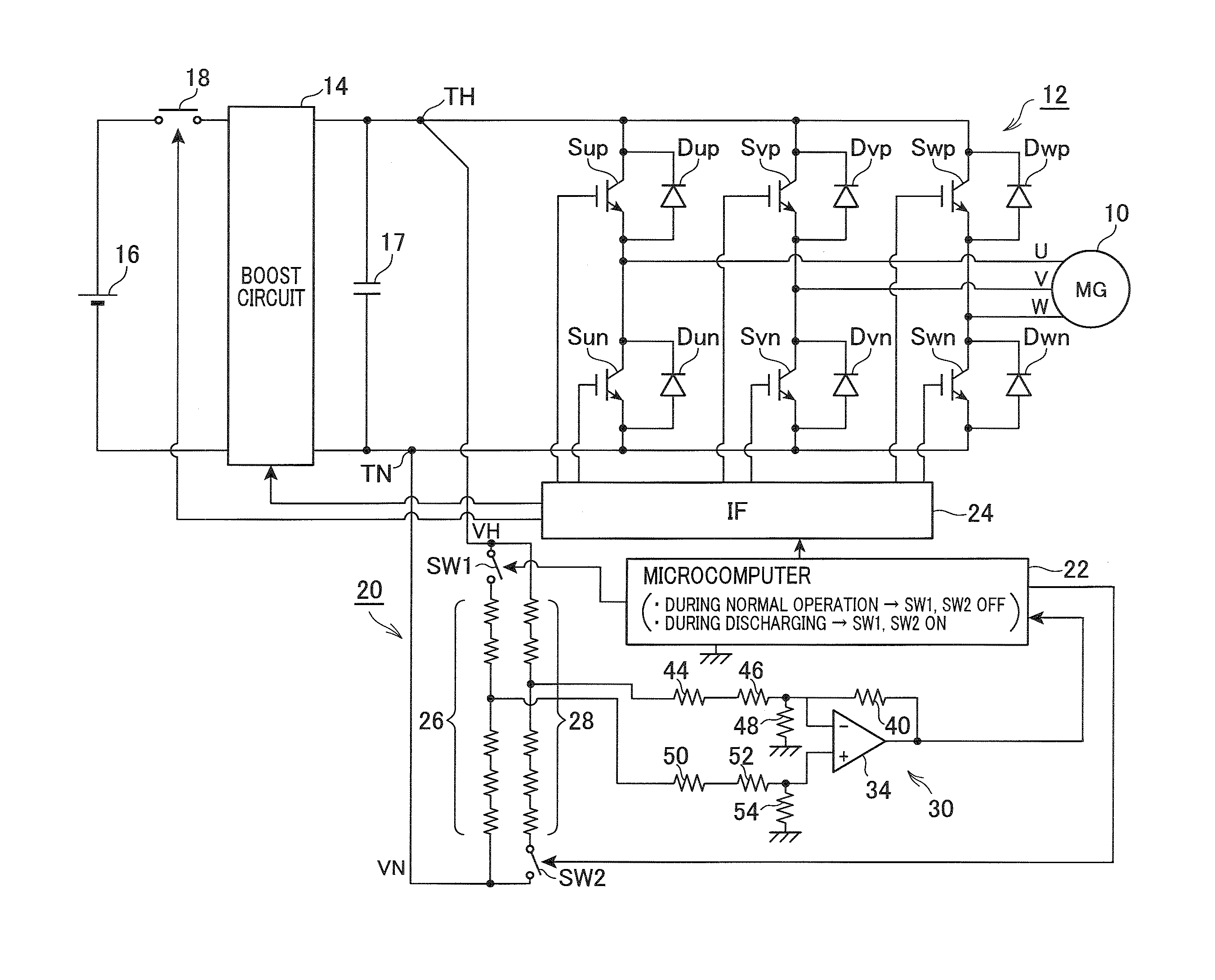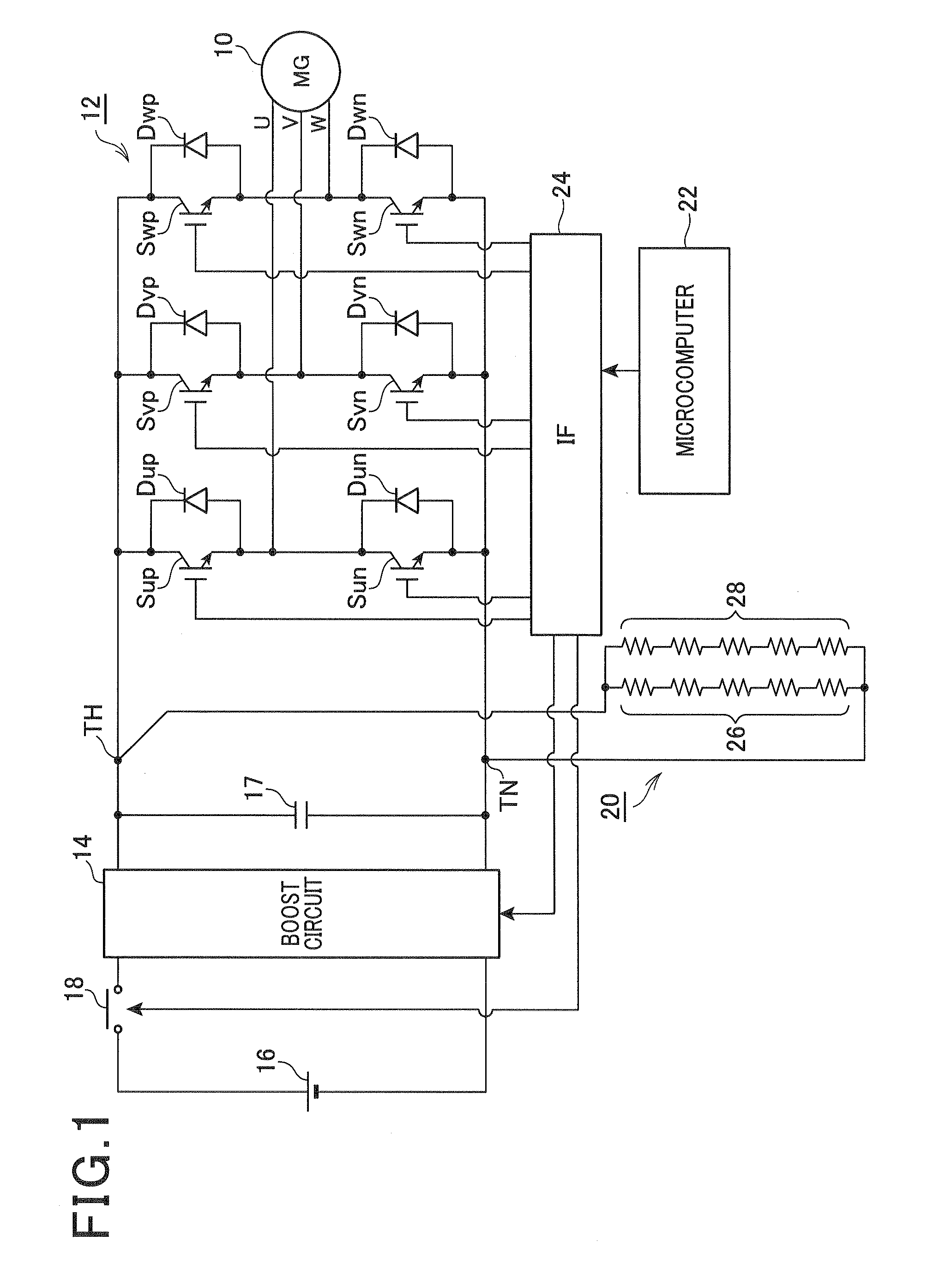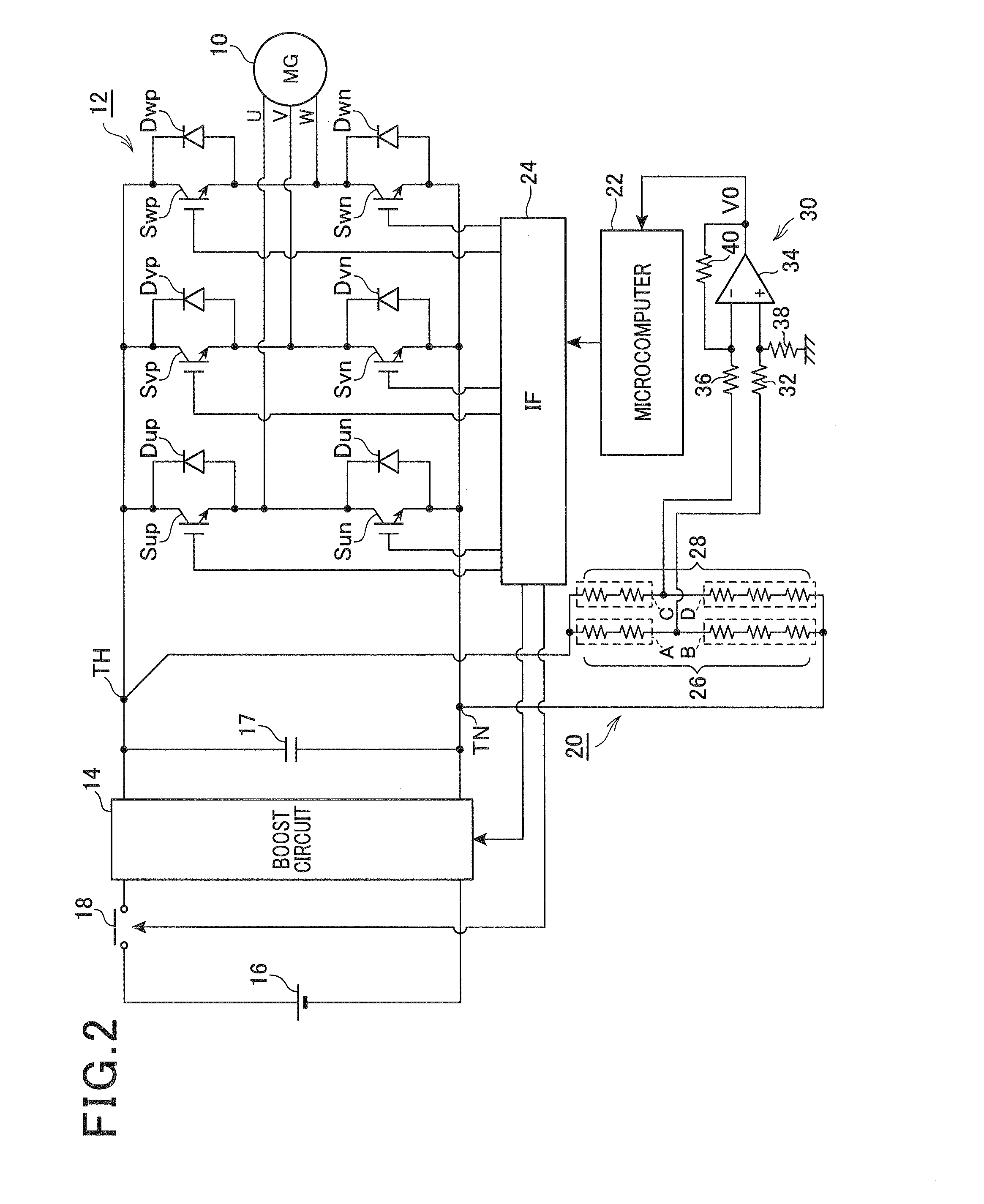Capacitor discharger for power conversion system
a technology of power conversion system and capacitor, applied in the direction of electric energy management, dc-ac conversion without reversal, transportation and packaging, etc., to achieve the effect of sufficient insulation distance and efficient heat dissipation
- Summary
- Abstract
- Description
- Claims
- Application Information
AI Technical Summary
Benefits of technology
Problems solved by technology
Method used
Image
Examples
first embodiment
[0023]There will now be explained a power conversion system in accordance with a first embodiment of the present invention with reference to FIG. 1, to which a capacitor discharger of the present invention is applied. The power conversion system is electrically connected to a main rotating machine for a hybrid vehicle.
[0024]FIG. 1 schematically shows the power conversion system of the first embodiment.
[0025]As shown in FIG. 1, a motor-generator 10, as a prime mover for a vehicle, is mechanically connected to a drive wheel (not shown). The motor-generator 10 is electrically connected to a high-voltage battery 16 via an inverter 12 and via a boost circuit 14.
[0026]More specifically, the high-voltage battery 16 may be a secondary battery whose terminal voltage is equal to or greater than 100 V. The boost circuit 14 includes a series connection of a pair of switching elements (not shown), a capacitor 17 (referred to as a smoothing capacitor) electrically connected in parallel with the s...
second embodiment
[0043]There will now be explained a power conversion system in accordance with a second embodiment of the present invention. Only differences of the second embodiment from the first embodiment will be explained.
[0044]FIG. 2 schematically shows a power conversion system in accordance with the second embodiment.
[0045]As shown in FIG. 2, a specific one of junctions of resistive elements of the high resistance resistor 26 and a specific one of junctions of resistive elements of the high resistance resistor 28 are both electrically connected to a differential amplifier circuit 30. More specifically, the nth junction of resistive elements (n=2 in the present embodiment), from the high side or from the positive input terminal TH side, of the high resistance resistor 26 that is a junction of the nth resistive element and the (n+1)th resistive element included in the high resistance resistor 26 is electrically connected to a non-inverting input terminal of the operational amplifier 34 throug...
third embodiment
[0057]There will now be explained a power conversion system in accordance with a third embodiment of the present invention. Only differences of the third embodiment from the second embodiment will be explained.
[0058]FIG. 5 schematically shows a power conversion system in accordance with the third embodiment.
[0059]In the present embodiment, the differential amplifier circuit 30 is used to perform the abnormality determination process for the parallel connection of high resistance resistors 26, 28. The differential amplifier circuit 30 is also used as voltage detection circuit to detect an input voltage of the inverter 12.
[0060]The voltage detection circuit is required for the microcomputer 22 to use the input voltage of the inverter 12 for generating an operation signal for each switching element. The voltage detection circuit converts the input voltage of the inverter 12 into a voltage that is applicable to the A / D converter in the microcomputer 22.
[0061]Since in the present embodim...
PUM
 Login to View More
Login to View More Abstract
Description
Claims
Application Information
 Login to View More
Login to View More - R&D
- Intellectual Property
- Life Sciences
- Materials
- Tech Scout
- Unparalleled Data Quality
- Higher Quality Content
- 60% Fewer Hallucinations
Browse by: Latest US Patents, China's latest patents, Technical Efficacy Thesaurus, Application Domain, Technology Topic, Popular Technical Reports.
© 2025 PatSnap. All rights reserved.Legal|Privacy policy|Modern Slavery Act Transparency Statement|Sitemap|About US| Contact US: help@patsnap.com



